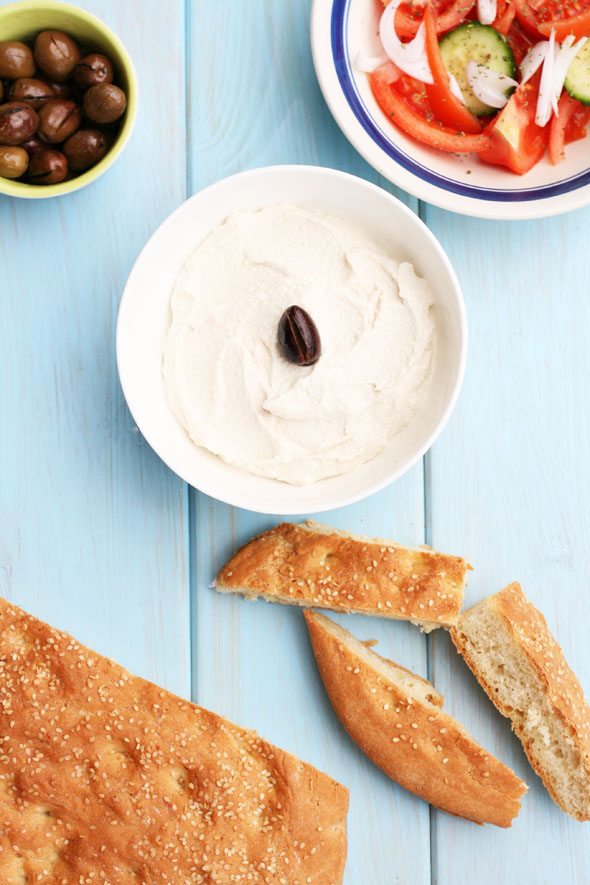Lagảna bread and taramosalảta , Shrove Monday’s specials.

Shrove Monday is the day after Carnival and the first day of the Orthodox Great Lent which lasts for forty days until Easter. Like any other festive day, Shrove Monday has its own traditions. Adults love it for the food and children love the flying of the kites. In Greek it is called “Clean Monday” because we don’t eat meat, dairy products, and only certain types of fish are traditionally allowed. All the bakeries in the country bake only one kind of bread, lagána , a very tasty flat oval bread sprinkled with sesame seeds. It is such a pity we can find this bread only once a year. In every town there are open air festivals for the flying of the kites, - where everyone is served fasolada , baked butter beans , lagána bread and taramosaláta. Taramosaláta is a cod roe spread made with the roe, bread crumbs, olive oil, and lemon. It is not fishy at all; it tastes rather like mayonnaise with shrimps. White taramá is the best quality cod “caviar

